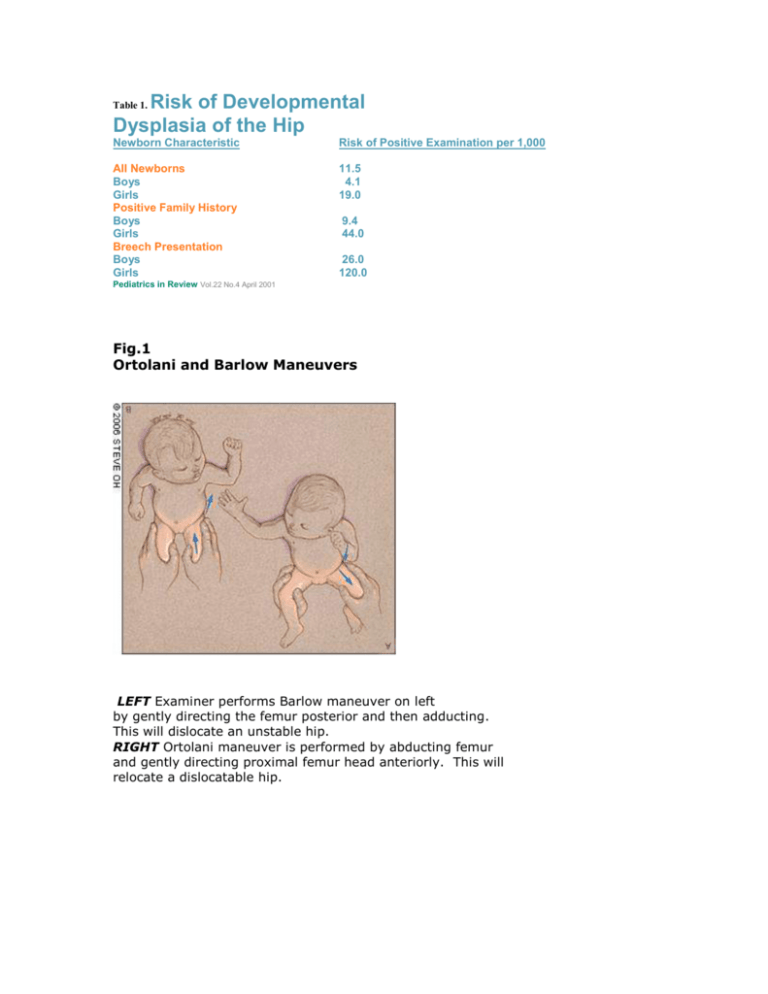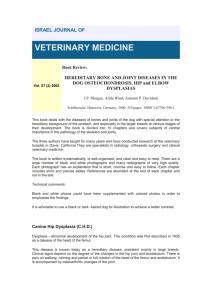DDH Figures (From Peds in Review Article)
advertisement

Risk of Developmental Dysplasia of the Hip Table 1. Newborn Characteristic 0 Newborns All Newborns Boys Girls Positive Family History Boys Girls Breech Presentation Boys Girls Risk of Positive Examination per 1,000 11.5 4.1 19.0 9.4 44.0 26.0 120.0 Pediatrics in Review Vol.22 No.4 April 2001 Fig.1 Ortolani and Barlow Maneuvers LEFT Examiner performs Barlow maneuver on left by gently directing the femur posterior and then adducting. This will dislocate an unstable hip. RIGHT Ortolani maneuver is performed by abducting femur and gently directing proximal femur head anteriorly. This will relocate a dislocatable hip. Fig. 2 Galeazzi test The Galeazzi test is performed with the infant flexed, and feet flat on a level surface. In this same level. In unilateral dislocation, the head and the ipsilateral knee will be lower than the supine, hips flexed to 90º, knees position, the knees are normally at the of the femur is displaced posteriorly, other knee. Fig. 3 Asymmetric leg folds Asymmetry of the thigh or popliteal creases is suggestive of developmental dysplasia of the hip, with the abnormality on the side where the crease is most proximal. Fig. 4 Fig. 5











